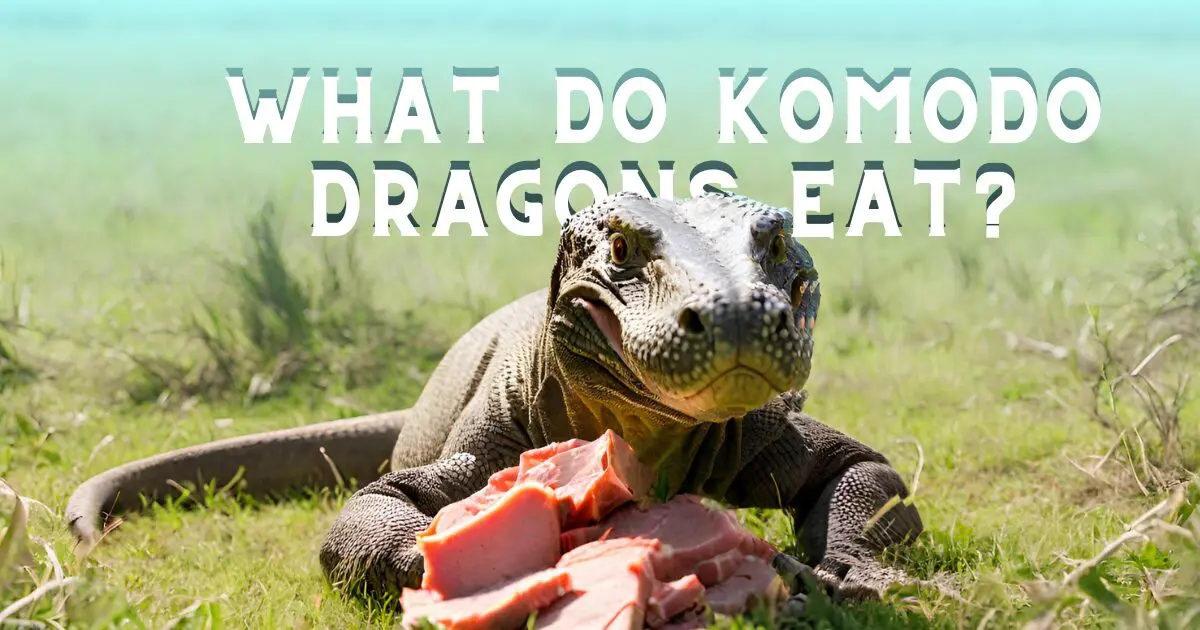The sight of a Komodo dragon can be scary if you are standing right in front of it. But if you are in a zoo while the large reptile is inside a cage, then it’s a different case. Lizards are usually small in size. Their exceptionally big size will make you wonder, “What do Komodo dragons eat?”
Komodo dragons are carnivores and will eat almost any kind of meat. The youngest ones feast on insects, lizards, and birds. As they mature, their appetite grows for larger prey. Adults can eat deer, wild boar, and even water buffalo! Sometimes, they may eat each other as well.
The wildlife of these dragons is full of shocks and surprises. The more you read, the more you will be surprised. Sit tight.
Key Points of the Article:
- Komodo dragons eat nothing but meat and they can eat various meat
- They are heavy eaters and can eat a good amount in one sitting
- Vegetable is not suitable for them at all
- Still, Komodo dragons do not eat all kinds of animals
- Komodo dragons can also eat their offspring.
What Do Komodo Dragons Eat?
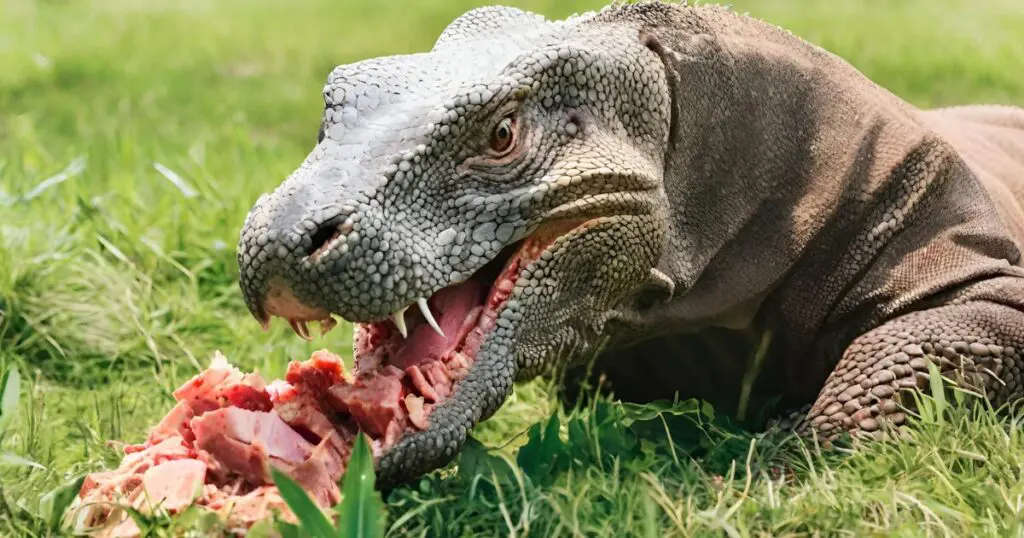
These lizards are undeniable carnivores, which means their diet consists solely of diet. Thankfully, where Komodo dragons live provides a good source of meat for them. They are impressive hunters and eat a variety of meat.
1. What Do Komodo Dragons Hatchlings Eat?
The hatchling Komodos are also carnivores. They are small in size but still venomous. They’re well-suited to catching insects, lizards, and birds. Their keen sense of smell is a secret weapon. It helps them locate hidden eggs and vulnerable prey.
2. What Do Adult Komodo Dragons Eat?
As Komodo dragons mature, their appetites expand to match their growing bodies. They transform into skilled hunters, taking down deer, wild boar, and even formidable water buffalo!
Adult Komodo dragons are not picky eaters. Instead, these large reptiles are opportunistic scavengers. Their impressive sense of smell allows them to detect carrion from miles away. This carrion-consuming habit plays a vital role in their island ecosystem. They help clean up the environment by devouring dead animals.
3. A List of Animals They Can Eat
Although I don’t think it is necessary, here is a list of animals these reptiles feast on.
- Insects, such as grasshoppers, crickets, and beetles.
- Small lizards like geckos and skinks
- Snakes
- Birds
- Rodents: Rats, mice, and other rodents
- Monkeys
- Goats
- Wild Boar
- Deer, including rusa deer, are a favorite food source for Komodo dragons.
- Horses, though not a common choice
- Water Buffalo when they are weak, injured, or young.
- Carrion
- Fish and even
- Humans in rare cases.
How Do Komodo Dragons Hunt Foods?
Komodo dragons are venomous and ambush predators. Despite their large size, they usually avoid attacking from a distance. Instead, they will wait after noticing a potential prey till it comes near to them. They rely on stealth and a surprising weapon: venom.
Komodo dragons’ forked tongue works like the nose of a dog. It flickers and samples the air for scents of prey, even if it is miles away. Once they locate a target, they use their powerful legs to stalk silently, waiting for the opportune moment. Their keen sense of smell allows them to exploit weaknesses. Yes, they can also sense injury and illness in their prey.
As soon as the prey is within striking range, Komodos jump into action. The surprise appearance of their huge body often takes their prey aback. The bite itself delivers a potent venom that weakens and hinders blood clotting. They can then use their sharp teeth and powerful jaws to tear flesh. For smaller prey, they can swallow it whole.
Sometimes, large targets may escape. However, they do not bother about it. These reptiles can keep track of the injured prey using their sense of smell. Once the prey dies, they will devour themselves on the flesh and bones of the animal.
Can Komodo Dragons Eat Vegetables?
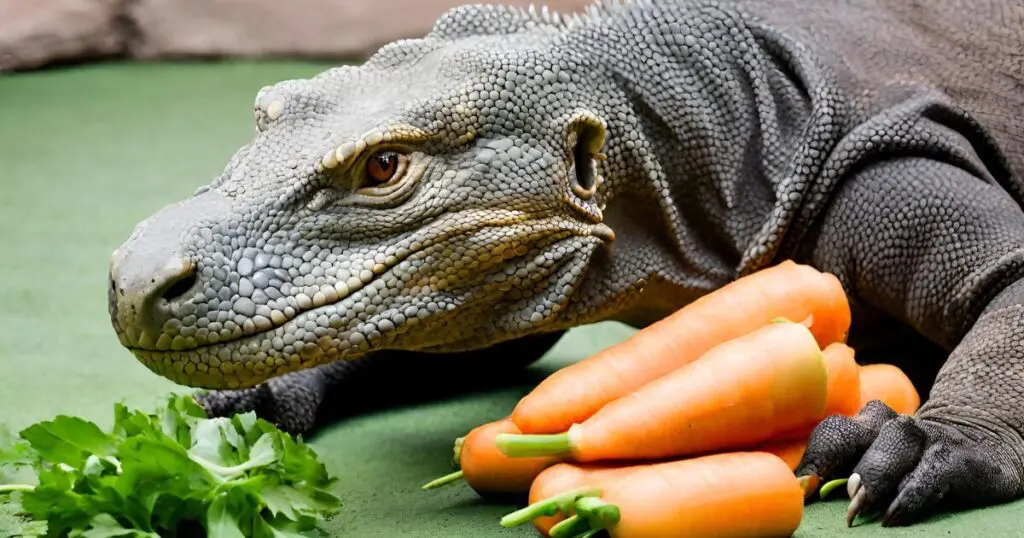
I have already mentioned that Komodo dragons are strict carnivores. They cannot help but live on other animals. No vegetarian movement is going to change it for them. Here is why:
- Their digestive system is specifically designed for processing meat. They lack the complex enzymes needed to break down plant cell walls. Without these enzymes, vegetables would pass through the digestive tract undigested.
- Their bodies are geared towards a high-protein, high-fat diet. They obtain energy from breaking down protein and fat from their prey. Their needs won’t be fulfilled by the carbohydrates found in vegetables.
- Komodo dragons rely on bursts of speed and conserving energy between hunts. Digesting vegetables is a slow and energy-intensive process, which would not be an efficient use of their resources.
Interesting Facts about Komodo Dragon Eating Habits
Here are some interesting facts about the diet of Komodo dragons. I am sure you will love it as a reptile enthusiast.
- These reptiles can eat up to 80% of their body weight in a single meal. This impressive feat allows them to go long periods between meals.
- They can survive on a single large meal for weeks or even months! Thanks to their slow metabolism and heavy eating ability.
- Komodo dragons don’t have the capability to store excess food.
- Despite being vicious, they often share their food with other Komodos.
- Komodo dragons have been documented eating their young and offspring.
Do Komodo Dragons Drink Water?
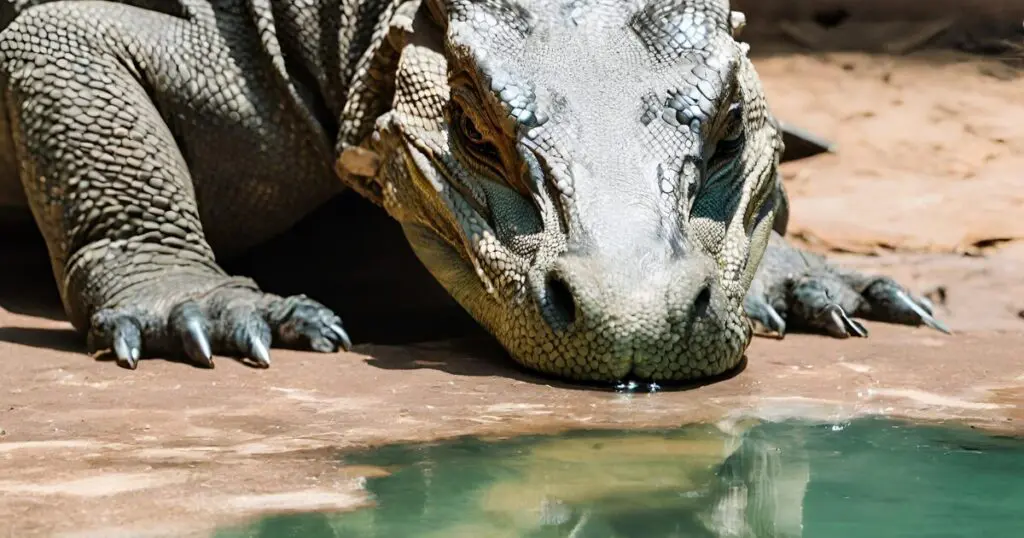
Yes, Komodo dragons do drink water, although they are efficient at conserving it. Water plays a crucial role in their survival.
- Komodo dragons need water to regulate body temperature. Water helps them sweat and maintain internal functions. It is especially important during the hot days.
- Water plays a crucial role in digestion. It helps break down food and move it through their digestive system.
- Water acts as a lubricant for their joints and allows for smooth movement. Without proper hydration, their difficult movement might have affected hunting.
- Water is essential for eliminating waste products through urination. Their kidneys filter waste products from the blood, creating urine. Water dilutes this waste and makes it easier for their bodies to expel it through urination.
What Animals Komodo Dragons Do Not Eat
Yes, these dragons are dangerous animals. Still, they tend to avoid eating certain animals. Some of the animals they do not eat are:
1. Large Healthy Predators
Komodo dragons might not be the smartest animals, but they are smart enough to avoid their predators. They keep a distance from larger animals than them. One of their arch-rivals is healthy crocodiles. However, if they find any injured or weak ones, Komodos may try to take a bite.
2. Poisonous Animals
Komodo dragons are opportunistic, but they’re not suicidal. That is why they tend to avoid poisonous animals.
One bite from a venomous snake or a meal of a poisonous pufferfish could be fatal. Their venom can cause paralysis, organ failure, or even death. A Komodo dragon’s tough hide might offer some protection, but it’s not worth the risk.
Even if they survive the toxins, the meat of a poisonous animal might not be worth the trouble. Their bodies might not be able to properly digest the toxins. They can get sick, which I guess they don’t enjoy at all. There’s simply better, safer food readily available in the Komodo National Park ecosystem.
3. Thorny or Spiky Animals
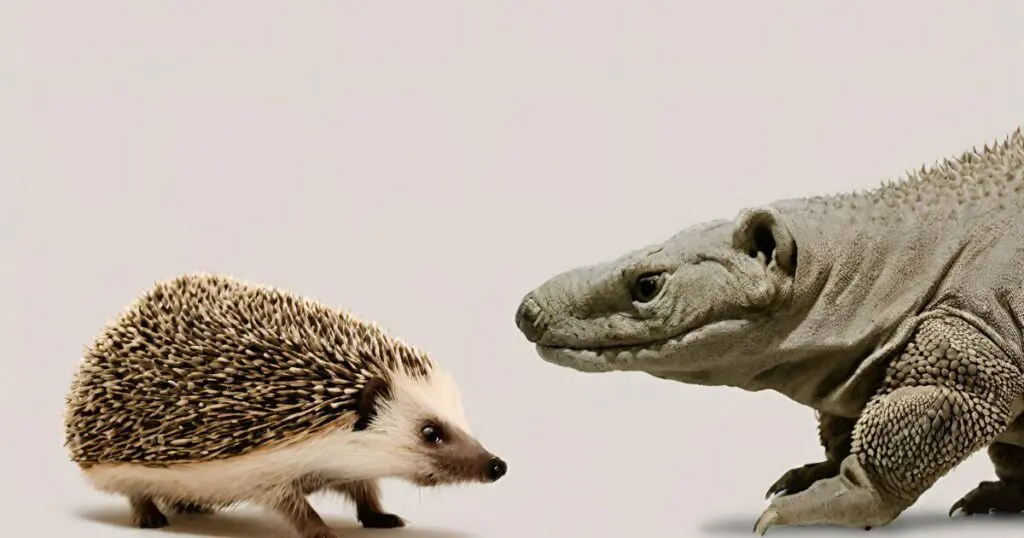
Another type of animal they avoid is the spiky one. Thorny animals are often well-defended and difficult to overpower. Getting pierced by sharp thorns or quills could cause serious injuries or infections. These injuries could hinder their hunting ability or even be fatal.
Besides, these animals are often small in size. So, Komodos prefer not to take any risk for such prickly prey. They decide to spend their energy better in hunting easier targets.
4. Fast-Moving Prey
Komodo dragons are built for stealth and ambush, not marathons. They do not prefer to run after prey for miles.
These massive reptiles rely on conserving energy. Chasing speedy animals like deer or antelope would be a waste of precious resources. The chances of catching them are slim. Moreover, the effort expended wouldn’t be compensated by the meal.
Their powerful legs are suited for short bursts of speed and stalking prey, not sustained chases. Their heavy bodies and slow metabolism wouldn’t allow them to outrun agile animals. They’re better off waiting for an unsuspecting victim to come within striking range.
Conclusion
In the end, Komodo dragons lead a good life on meat. Their native place, Indonesia, offers plenty of opportunities to survive. If you ever visit them in a zoo, you must never try to feed them any vegetables. Their biology is not suitable for that. Meat is their primary source of nutrition. This is how they live on!
